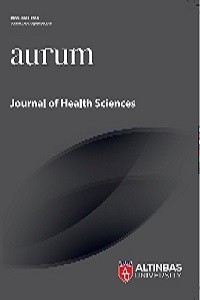The Importance of Antimicrobials in the Public Health
The Importance of Antimicrobials in the Public Health
Antimicrobials, antifungal antibacterial, antiviral,
___
- Antimicrobial, www.wikipedia.com (accessed 30 June 2020)
- Antimicrobial agent, https://www.britannica.com/science/antimicrobial-agent, (accessed 30 June 2020)
- Biyik, H. H., Torun, B., Onur, M., Coban, E. P. (2018). Effects of the stem extracts of Cynara scolymus L. on some microorganisms. Annals Of Phytomedicine-An International Journal, 7(2), 138-142
- Coban, E. P., Ercin, Z., Torun, B., Biyik, H. H. (2018). Antimicrobial effects of the stem extracts of Apium graveolens Mill. Annals of Phytomedicine-An International Journal, 7(2), 70-75.
- Coban, E. P., Fırıncı, R., Biyik, H., Günay, M. E. (2017). Unsymmetrically substituted imidazolium salts: synthesis, characterization and antimicrobial activity. Brazilian Journal of Pharmaceutical Sciences, 53(1).
- Farouk, S. N., Muhammadi A., Aminu, M. A. (2018). Application of nanomaterials as antimicrobial agents: a review. Arch Nano Op Acc J, 1(3). ANOAJ.MS.ID.000114. Doi: 10.32474/ANOAJ.2018.01.000114.
- Güner, E., Yılmaz, S., Yusufoğlu, Kırmızıbayrak P.B., Bedir, E. (2019) Microbial transformation of cycloastragenol and astragenol by endophytic fungi isolated from Astragalus species.” Journal of Natural Products 82, 11, 2979-2985.
- Korani, M., Ghazizadeh, E., Korani, S., Hami, Z., Mohammadi-Bardbori, A. (2015). Effects of silver nanoparticles on human health. European Journal of Nanomedicine, 7(1), 51-62.
- Lemoine, M., Nayagam, S., Thursz, M. (2013). Viral hepatitis in resource-limited countries and access to antiviral therapies: current and future challenges. Future Virology, 8(4), 371–380.
- Moghadamtousi, S. Z., Kadir, A. H., Hassandarvish, P., Tajik, H., Abubakar, S., Zand, S., A. (2014). Review on antibacterial, antiviral, and antifungal activity of curcumin. Hindawi Publishing Corporation BioMed Research International, Article ID 186864, 12 http://dx.doi.org/10.1155/2014/186864
- Tomei, L., Altamura, S., Paonessa, G., De Francesco, R., Migliaccio, G. (2005). HCV antiviral resistance: the impact of in vitro studies on the development of antiviral agents targeting the viral NS5B polymerase. Antiviral Chemistry & Chemotherapy, 16(4), 225–245.
- Torun, B., Çoban, E. P., Biyik, H. H., Barisik, E. (2017). Antimicrobial Activity of Echinophora tenuifolia L. and Raphanus sativus L. Extracts. Indian J Pharm. Education Research, 51(1),136-43.
- Torun, B., Biyik, H. H., Ercin, Z., Coban, E. P. (2018). Antifungal activities of Urtica dioica L., Sinapis arvensis L. and Apium graveolens Mill. leaves on Botrytis cinerea Pers. Annals of Phytomedicine, 7(2), 94-97.
- ISSN: 2651-2815
- Yayın Aralığı: Yılda 3 Sayı
- Başlangıç: 2018
- Yayıncı: Altınbaş Üniversitesi
The Role of Cardiopulmonary Rehabilitation in Patients with Infected COVID-19
Digital Planning and Mucosa-supported Guided Implant Surgery: A Case Report
Importance of Medical Imaging Methods in Medicine
Özlem YILDIRIM, İrfan AYDIN, Handan TANYILDIZI KÖKKÜLÜNK
Using Theory to Nursing Research
The Use of Therapeutic Ultrason in Control of Biofilm Infections
Application of Tramadol Hydrogel as a Transdermal Drug Delivery with Sonophoresis Device to Rats
Sitem ŞAHİN, Gülengül DUMAN, Ece GENÇ, Alper YAMAN, Elif Çiğdem ALTUNOK
The Importance of Antimicrobials in the Public Health
Gender Mainstreaming in Health
Fikriye IŞIK, Mithat KIYAK, Mustafa IŞIK
The Relationship Mechanism Between Covid-19 and Renin-Angiotensin System
